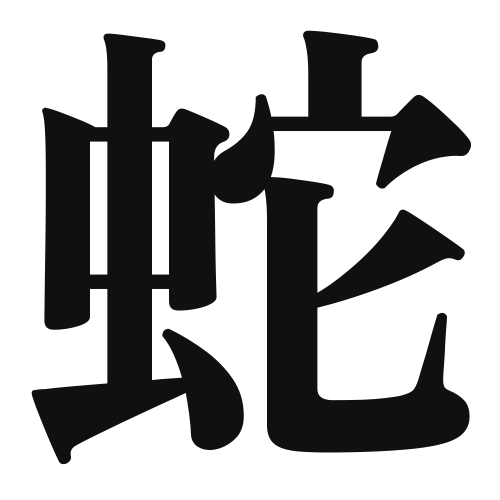1. Overview of Meaning
The kanji “蛇” (hebi) means “snake” in English. It refers to the elongated, legless reptile known for its scaly skin and ability to slither. In various cultures, snakes can symbolize different things, such as danger, wisdom, or transformation.
2. Formation and Radicals
The kanji “蛇” is a phono-semantic compound (形声文字), which means it combines both a phonetic and a semantic component. The left part, “虫” (mushi), is a radical that indicates it is an insect or creature, while the right part, “也” (ya), contributes to the pronunciation.
The radical “虫” is commonly associated with insects and small animals, which helps categorize “蛇” within the realm of living creatures.
3. Examples of Usage
Common words and phrases that include “蛇” are:
- 蛇口 (じゃぐち, jaguchi) – faucet (literally “snake mouth”)
- 蛇行 (だこう, dakou) – meandering (like a snake)
Example sentence in daily conversation:
「公園で蛇を見た。」(こうえんでへびをみた。) – “I saw a snake in the park.”
4. Synonyms and Antonyms
Similar kanji with related meanings include:
- 爬虫類 (はちゅうるい, hachuurui) – reptiles, which includes snakes but also other reptiles like lizards and turtles.
Antonyms or contrasting kanji include:
- 鳥 (とり, tori) – bird, representing a creature that flies, contrasting with the ground-dwelling snake.
5. Cultural and Historical Background
In Japanese culture, snakes are often associated with various beliefs and myths. They can symbolize protection and are sometimes seen as messengers of the gods. In folklore, snakes are also linked to water and fertility.
Common proverbs and idioms include:
- 「蛇の道は蛇」(へびのみちはへび) – “The path of the snake is known by the snake,” meaning that only those familiar with a situation can navigate it.
